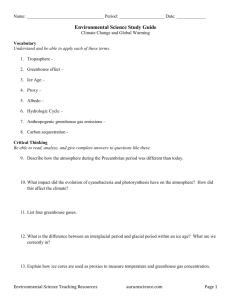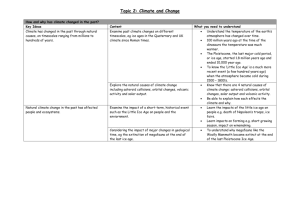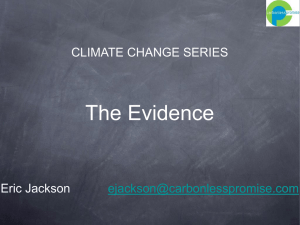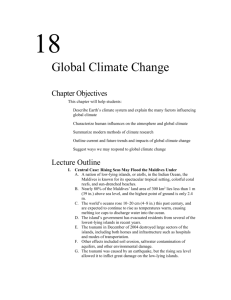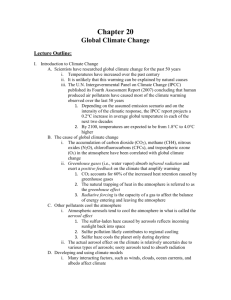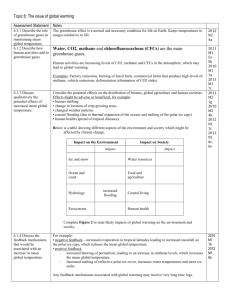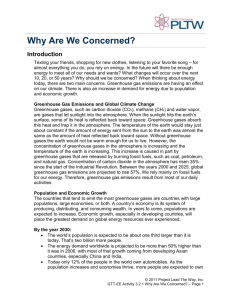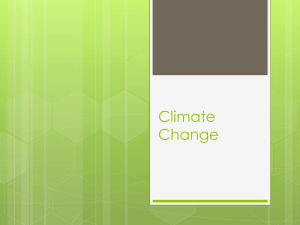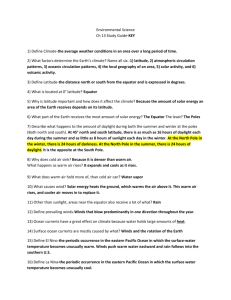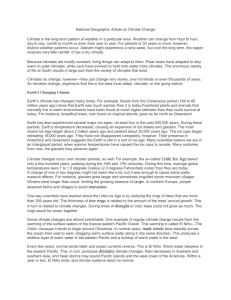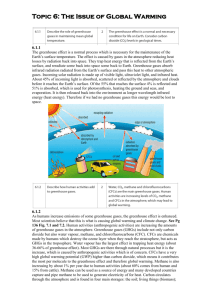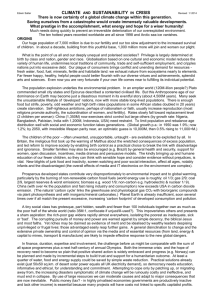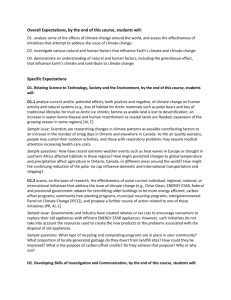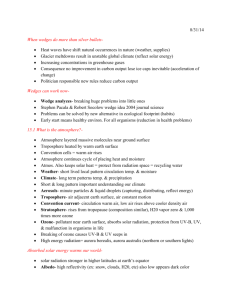Chapter 16 Study Guide - Warren Hills Regional School District
advertisement
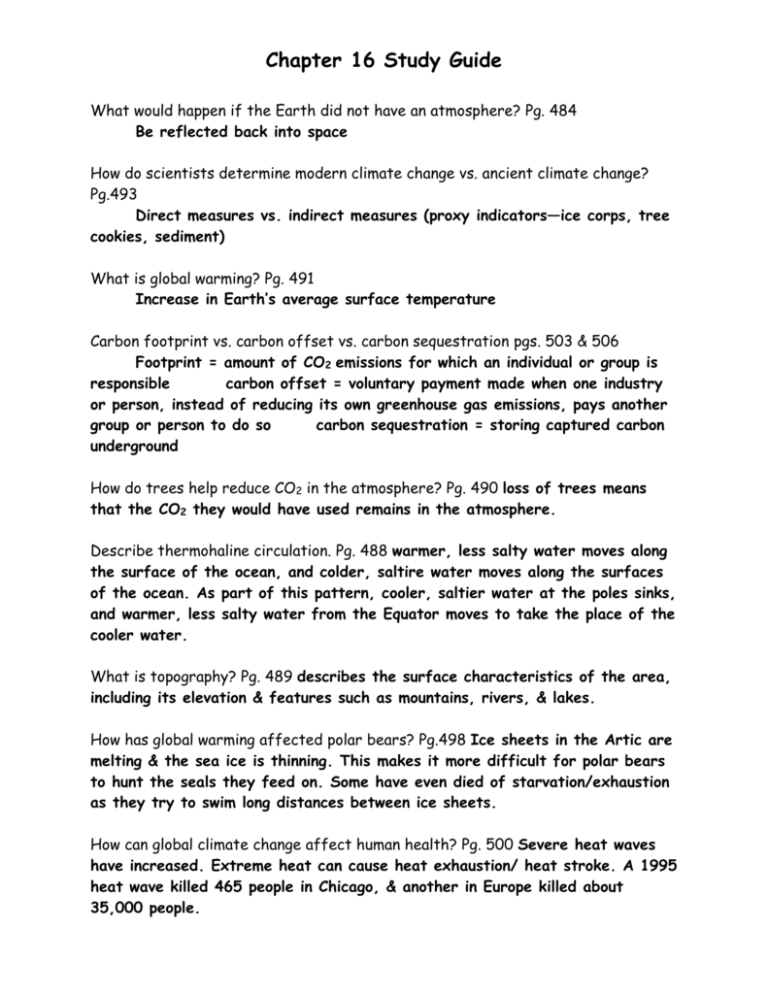
Chapter 16 Study Guide What would happen if the Earth did not have an atmosphere? Pg. 484 Be reflected back into space How do scientists determine modern climate change vs. ancient climate change? Pg.493 Direct measures vs. indirect measures (proxy indicators—ice corps, tree cookies, sediment) What is global warming? Pg. 491 Increase in Earth’s average surface temperature Carbon footprint vs. carbon offset vs. carbon sequestration pgs. 503 & 506 Footprint = amount of CO2 emissions for which an individual or group is responsible carbon offset = voluntary payment made when one industry or person, instead of reducing its own greenhouse gas emissions, pays another group or person to do so carbon sequestration = storing captured carbon underground How do trees help reduce CO2 in the atmosphere? Pg. 490 loss of trees means that the CO2 they would have used remains in the atmosphere. Describe thermohaline circulation. Pg. 488 warmer, less salty water moves along the surface of the ocean, and colder, saltire water moves along the surfaces of the ocean. As part of this pattern, cooler, saltier water at the poles sinks, and warmer, less salty water from the Equator moves to take the place of the cooler water. What is topography? Pg. 489 describes the surface characteristics of the area, including its elevation & features such as mountains, rivers, & lakes. How has global warming affected polar bears? Pg.498 Ice sheets in the Artic are melting & the sea ice is thinning. This makes it more difficult for polar bears to hunt the seals they feed on. Some have even died of starvation/exhaustion as they try to swim long distances between ice sheets. How can global climate change affect human health? Pg. 500 Severe heat waves have increased. Extreme heat can cause heat exhaustion/ heat stroke. A 1995 heat wave killed 465 people in Chicago, & another in Europe killed about 35,000 people. What is cap-and-trade? Pg. 505 government puts a cap on the amount of greenhouse gases that can be released by certain industries & power plants. Industries that release less gas than they are allowed can sell their leftover allowances to industries that are less efficient. What was the goal of the Kyoto Protocol? Pg. 507 International agreement that seeks to limit greenhouse gas emissions. Nations entered into a binding agreement to reduce the levels of greenhouse gases to levels below that of 1990. The US did not sign it because they felt it was an unfair treaty. Climate zones & their locations away from the equator pg. 486 Zones = tropical, temperate, & poles. Tropics = HOT, because they are close to equator, Poles = COLD, because the energy the poles receive from the sun’s rays is spread out over a larger area, as compared to the energy needed by regions near the equator. Temperate = (regions between the poles) cool during some parts of the year & warm in others What type of air rises and holds the most moisture? Pg. 487 warm air rises & can carry more water vapor How does the Earth’s orbit and tilt affect climate change? Pg. 490 they affect the distribution of solar radiation over Earth’s surface. This change in the distribution of sunlight can affect climate. Climate changes caused by these variations may last for thousands of years. What is radiation? Pg. pg. 484 the transfer of energy through space Describe the greenhouse effect. Pg. 484 a natural process in which certain gases in the atmosphere keep heat near Earth & prevent it from radiating into space. What are the 4 evidences scientists have posed for the idea that climate change is occurring? Rising atmospheric temperature, precipitation trends, melting ice & rising seas Tree rings – rainy season, a wide ring means there was a lot of rain that year Dry season, a thin ring means there was no rain that year A dark mark means the tree was damaged that year (by fire) Global warming – name 2 things that can reverse or slow the process

